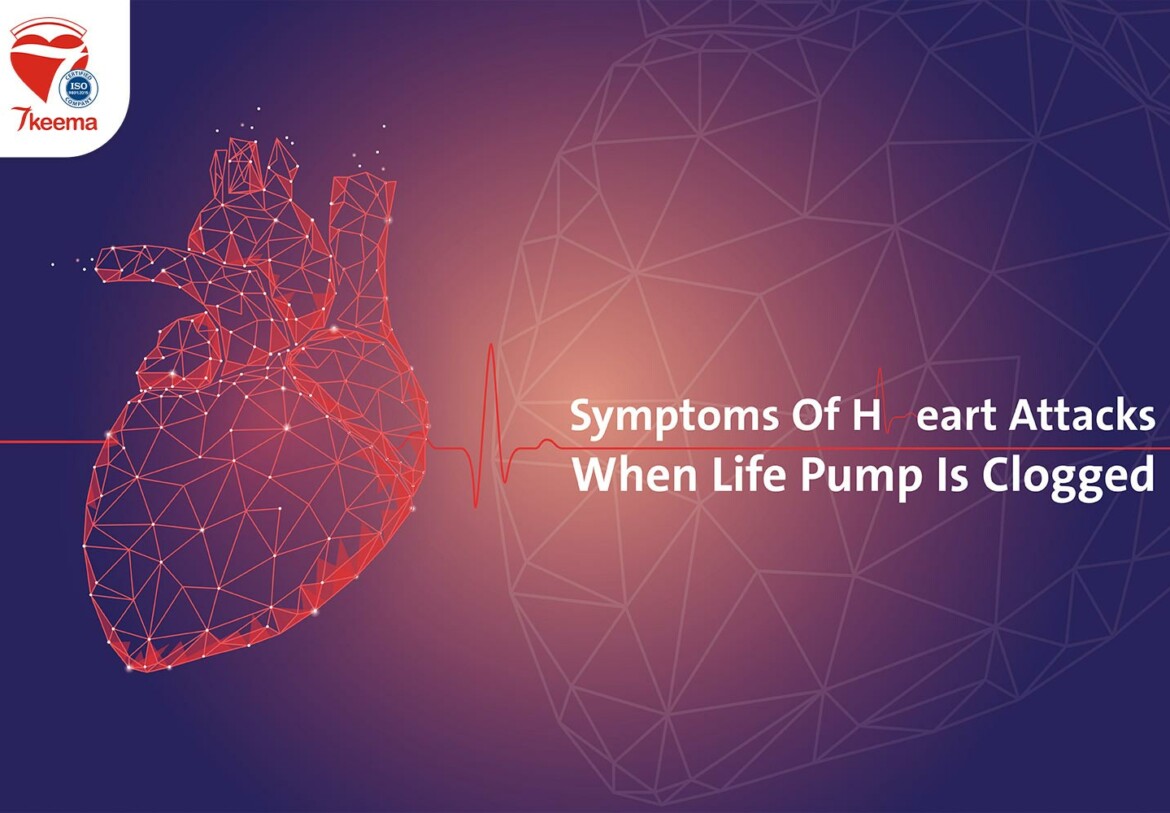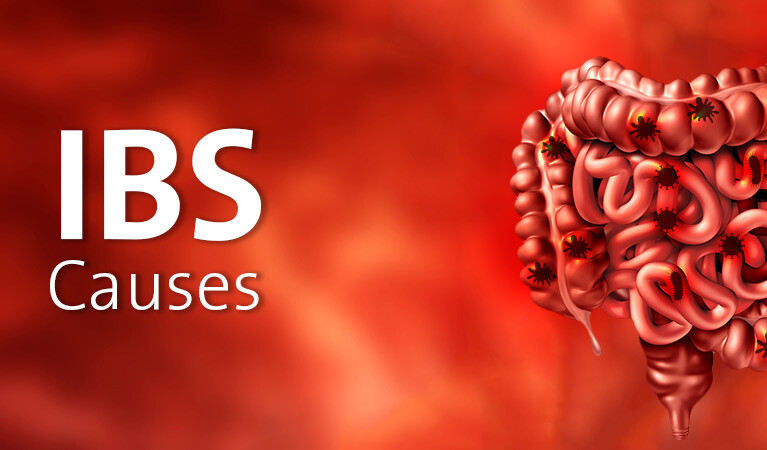A whole circulation rolls into our bodies. Tons of paths with different sizes and volumes hold blood and carry it to feed our organs all over the body. From veins and arteries to capillaries have one job to accomplish, delivering oxygen and nutrition to body cells every second with no interruption, such as clots in general and heart attacks in particular.
Heart Attacks are due to blood clots that reach out to the heart and block its normal pumping rate. In fact, blood clots have many types and locations to hit, yet the ones causing heart attacks could be the most critical and life-threatening, as they hit the main and only blood pump in the body, blocking nutrition and oxygen to feed body cells.
To fully understand how blood clots affect the heart causing heart attack symptoms, we should first understand the different types of blood clots and how they could form.

Clots Types
There’re two main types of clots, and each could develop different symptoms, causing a different impact on the patient accordingly.
– Thromboembolism:
It mainly hits deep veins yet stays still with no movement, only blocking the bloodstream and reaching out to the following organs on the stream. This type of clots could develop many obvious symptoms, such as numbness, swelling, and redness in the surrounding skin.
– Obstructive Thromboembolism:
As much as it looks like the previous type, the big difference comes when you get to know that this type has the ability to move around different blood vessels. Accordingly, many more complications could be on the table due to the higher possibility of hitting a vital organ, with the symptoms of heart attacks on the top of the list. However, some known symptoms for such types include sweating, nausea, vomiting, pale skin, trouble breathing, and more.
You can check out this article for further information about blood clots in general and their complications.
Yet, clots have another way of classification, according to the location they hit. Similar to heart attacks, there’re brain clots, lung clots, legs & arms clots, and more.
Each of these types would develop its featured symptoms. For instance, heart attacks, lung clots, and brain clots are considered the most dangerous and critical, with fatal complications requiring instant intervention and professional medical assistance.

How Do Clots Take Place?
First of all, you should understand that clots, in general, are something natural and actually lifesaving in normal conditions. It’s the defense mechanism the body uses the stop any bleeding.
In fact, blood cells accumulate with each other to make a state transmission, from the fluid state to the solid one, or the semi-solid state, which helps stop the bleeding.
However, when this procedure happens inside different kinds of blood vessels without bleeding in the process, comes the whole issue we’re talking about. As we mentioned, these clots could obstruct the normal bloodstream-feeding body organs all the way.
These abnormal clots formations are due to many factors, among which comes the lack of protein C & S and the lack of plasmin production as well. Accordingly, these factors are more likely to occur with aging.
Not to mention that blood clots are also threatening all ages due to many factors and lifestyles. For instance, heart attacks, leg or arm clots, and whatever type are more likely to hit the elderly and youth.
Are The Symptoms Of Heart Attacks Dangerous?
Obviously, yes.
But to get a full image, we should dig into some details. As a matter of fact, Thromboembolism, and fixed clots, are not that big deal. The real threat is when these clots get to move around the bloodstream and succeed in hitting a vital organ, such as the heart, and causing the symptoms of heart attacks.
It’s a little bit confusing not to have some obvious symptoms during the clot formation so that you can deal with them instantly, and if there are any, they could be easily mixed up with other health conditions, leading the patient to deal with them with it wrongly.

Symptoms Of Heart Attacks
What are the 7 symptoms of heart attacks?
Symptoms of heart attacks and angina are quite similar due to reaching the same conclusion, which’s having issues feeding the heart with blood, whether it’s due to heart attacks or blood vessel issues.
You can check this article out to learn more about Angina symptoms and causes.
Normally, symptoms of heart attacks due to heart blood clots are pretty rare, regarding the amount of blood pumped every second, making the heart a very active area and reducing the risk of clots within such spots.
Still, symptoms of heart attacks are a risk and could hit due to many reasons. In fact, symptoms of heart attacks are the most critical and life-threatening and require instant help and medical assistance.
So, let’s spread out the most common symptoms of heart attacks as follows:
– Chest pain is one of the most common symptoms of heart attacks.
– Feeling unstable and unfocused.
– Shortness of breath.
– Symptoms of heart attacks would also include neck, arm, back, and jaw pain.
– Excessive sweating.
– Nausea and heartburn.
– Symptoms of heart attacks would also lead to a higher heart rate.

Symptoms Of Heart Attacks For Women
You detect a few more points concerning the symptoms of heart attacks when it hits a lady, between which we can mention the following:
– Nausea here is a key player.
– Vomiting.
– Symptoms of heart attacks would let a woman feel severe abdominal pain.
Accordingly, you can easily imagine how the symptoms of heart attacks could be mixed up with other cases. Especially when we’re talking about vomiting, nausea, and sweating, which are very common in many other diseases and health conditions.
General Symptoms Of Blood Clots
Blood clots could be formed in different locations around the body; similar to heart attacks, many other organs could be critically affected. We can mention lungs and brain, yet legs and arms clots couldn’t be neglected.
Therefore, we’re going to list some of the main symptoms of blood clots concerning every organ as follows.

Arm & Leg Clots Symptoms
Usually, clots would take place at the lower leg part, leading to many other symptoms, such as:
– Arm or leg swelling
– Pain in the arm or leg that has the clot
– Arm or leg tissues could be more tender
– Warm skin around the clot area
– Red skin
Clot volume would matter. The more it gets bigger, the more severe symptoms could be; small clots could not develop any symptoms, yet the bigger ones could lead to a full swelling arm or leg and extreme pain.
Arms & leg clots are more likely to develop on one side at a time, and it’s so rare to have them on both sides simultaneously.
Abdominal Clots Symptoms
These are the clots that occur within the abdominal area into whatever organ exists, which makes symptoms variations accordingly, and sometimes the patient wouldn’t feel any symptoms.
Between such symptoms, we can mention the following:
– Severe abdominal pain.
– Pain goes in and out, not constant.
– More frequent nausea.
– Vomiting.
– Few drops of blood with stool.
– Frequent diarrhea.
– Abdominal swelling or feeling bloated.
– Having what’s called fluid accumulation, also known as ascites.

Brain Clots Symptoms
Brain clots are as dangerous, critical, and severe as the symptoms of heart attacks, not to mention how they could lead to many severe complications if they were not treated on the spot.
This clot is probably to be formed in a further location over the body and gets to move inside the veins until it reaches the brain. When a clot hits the brain, it’s mainly blocking normal blood feeding to brain cells, leading to a lack of oxygen that ruins the brain cells.
In the aftermath of a brain clot, the patient may lose many abilities, such as moving one side arm and leg, losing vision in one eye, or any other complications that affect the patient’s normal lifestyle.
Hence, brain clots symptoms could be mentioned as follows:
– Paralysis
– Numbness or weakness in the arms, legs, or face, especially on one side of the body.
– Facing troubles while speaking and difficulties understanding others.
– Be confused and disoriented with weak responses.
– Instant behavioral transformation and severe temper.
– Blurred vision, or maybe losing sight in one eye.
– Facing trouble walking normally.
– Losing balance.
– Feeling lightheaded.
– Instant and severe headache.
– Nausea and vomiting.
These previous symptoms could occur one after one or a few at a time; no matter what, instant medical care should reduce the risk of severe complications.
Lungs Clots Symptoms
Clots could also be hitting the lungs, one of the most critical clots ever. Leads to many symptoms, among which we can mention the following:
– Troubles breathing.
– Severe chest pain.
– Palpation and higher heartbeat rate.
– Hard coughing may be bloody.

Reference:
https://www.yalemedicine.org/conditions/blood-clots-in-veins-heart-and-lungs
https://www.webmd.com/dvt/blood-clots
https://www.baptisthealth.com/services/heart-care/conditions/blood-clot
https://my.clevelandclinic.org/health/diseases/17675-blood-clots




